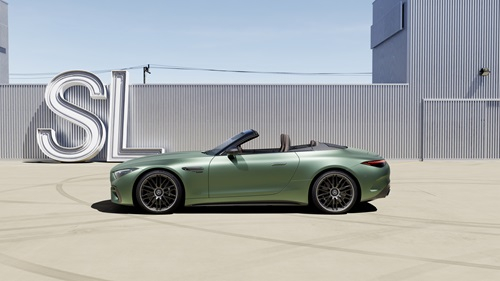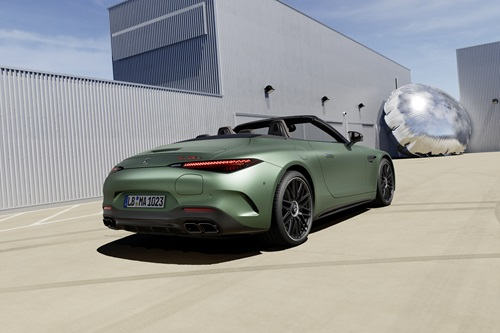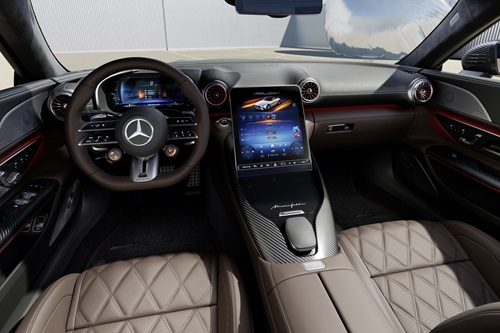Mercedes-AMG crowns the SL series with the new SL 63 S E PERFORMANCE (weighted fuel consumption, combined 7.7 l/100 km; weighted power consumption, combined 11.5 kWh/100 km; weighted CO2 emissions, combined 175 g/km[1]). The 4.0-litre V8 biturbo engine and the AMG Electric Drive Unit together generate a system output of 600 kW (816 hp) and a maximum system torque of up to 1,420 Nm. This makes the new model the most powerful SL of all time. And it is already the fifth series with the AMG-specific E PERFORMANCE hybrid technology. The immediate response of the electric drive, the rapid build-up of torque and the linear power delivery enable an impressive driving experience. The acceleration to 100 km/h in 2.9 seconds and the top speed of 317 km/h underline the confident appearance. Systems such as the AMG ACTIVE RIDE CONTROL suspension with active roll stabilisation and active rear-axle steering ensure a widespread between comfort and driving dynamics.
In the SL 63 S E PERFORMANCE, the AMG 4.0-litre V8 biturbo engine on the front axle is also combined with an electric drive unit on the rear axle. It integrates a 150 kW (204 hp), permanently excited synchronous electric motor with an electrically switched two-speed transmission and a mechanical rear axle limited-slip differential. The lightweight high-performance battery is also located in the rear above the rear axle. This compact design results in numerous advantages. The electric motor acts directly on the rear axle and can therefore convert its power more directly into propulsion. This provides an extra boost when starting off, accelerating, or overtaking. As slip on the rear axle increases, the driving force of the electric motor is also transferred to the front wheels as required. The mechanical connection of the fully variable AMG Performance 4MATIC+ all-wheel drive makes this possible via the cardan shaft and drive shafts of the front wheels. The positioning on the rear axle improves the weight and axle load distribution in the vehicle and thus forms the basis for convincing handling.



